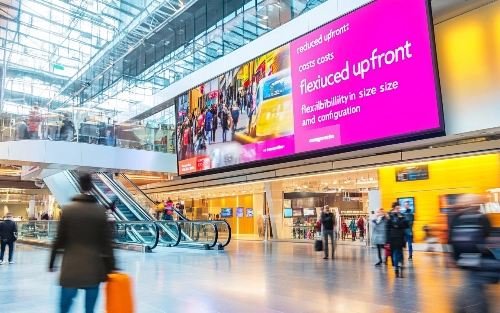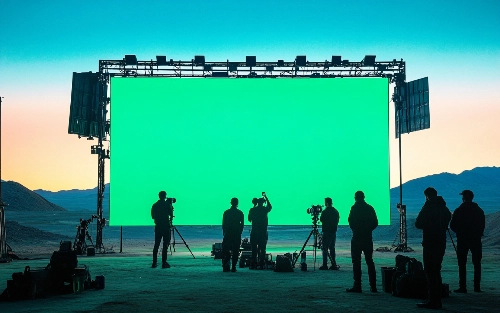The world of advertising is changing fast. Traditional billboards are fading, while DOOH LED displays are taking over. These digital screens grab attention like never before. They offer vibrant colors and dynamic content that simply can't be matched by static ads.
Businesses can showcase their brand in real-time, reaching a wider audience with engaging visuals. The flexibility of updating content instantly makes DOOH LED displays a game-changer. They stand out in crowded spaces, ensuring your message gets seen. As companies strive for more effective marketing strategies, embracing this technology is essential for staying ahead.
Key Takeaways
- Digital Out Of Home (DOOH) advertising is crucial for reaching audiences in dynamic environments, making it a valuable tool for marketers.
- LED displays offer significant advantages over traditional Out Of Home (OOH) advertising, including vibrant visuals and energy efficiency.
- Engaging content is key; use dynamic messaging on LED displays to capture viewer attention and enhance engagement.
- Consider various applications of DOOH LED displays, from public transport ads to retail environments, to maximize your reach.
- Interactive content can significantly improve customer experience, encouraging audience participation and interaction with your brand.
- Real-time content updates allow advertisers to stay relevant and respond quickly to current events or trends, increasing ad effectiveness.
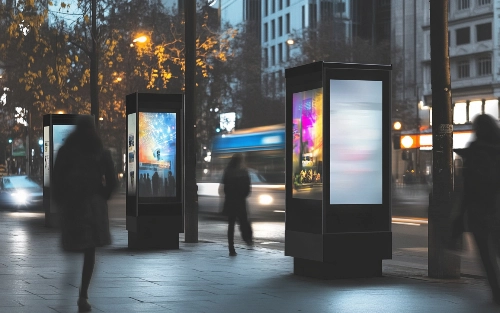
Understanding Digital Out Of Home
1. Advertising Evolution
Advertising has changed significantly over the years. Traditional advertising methods included billboards and print ads. These formats were static and lacked engagement. The rise of digital screens transformed outdoor advertising. Now, advertisers can display dynamic content that captures attention.
The shift began in the early 2000s with the introduction of digital billboards. By 2010, many cities adopted digital formats widely. These new formats allowed for rotating ads and real-time updates. This change enhanced the viewer's experience and increased exposure.
2. Key Characteristics
Digital Out Of Home (DOOH) advertising stands out from traditional methods. One main difference is interactivity. DOOH allows for audience engagement through touchscreens or mobile integration. Advertisers can create tailored experiences based on location and time.
Another characteristic is flexibility. Advertisers can change messages quickly compared to static ads. They can adjust content based on weather conditions or events nearby. This adaptability makes DOOH a powerful tool in marketing strategies.
Furthermore, DOOH provides valuable data analytics. Advertisers can track impressions and audience demographics more accurately than before. This data helps refine campaigns for better results.
3. Technological Advancements
Technological innovations have driven the growth of DOOH advertising. High-resolution displays have improved visual quality significantly. These outdoor screens are now brighter and clearer, even in direct sunlight.
Cloud technology also plays a crucial role in DOOH. It enables remote management of content across multiple locations. Advertisers can update displays instantly without physical presence.
Advancements in artificial intelligence enhance targeting capabilities. AI analyzes viewer behavior to deliver relevant ads at optimal times. This precision increases engagement rates and boosts return on investment.
Mobile technology complements these advancements as well. Consumers often carry smartphones, which connect them to DOOH campaigns. QR codes or NFC technology allow instant interaction with advertisements.
Defining DOOH and Its Importance
1. Integration of Technology
DOOH combines digital technology with outdoor advertising. This integration enhances visibility for brands. Traditional billboards are static. They cannot change content quickly. Digital displays can show multiple ads in a short time. Advertisers can update messages instantly based on current events or audience engagement.
For example, a clothing brand can promote a sale during a major event nearby. This adaptability attracts more attention from passersby. The use of bright colors and moving images draws the eye. As a result, DOOH becomes a powerful tool for marketers.
2. Real-Time Communication
Real-time communication is vital in today’s marketing strategies. Consumers expect instant information. DOOH allows advertisers to respond to trends immediately. They can display relevant ads based on weather, traffic, or social media trends.
For instance, if it starts raining, a nearby umbrella shop can run an ad promoting discounts on umbrellas. This immediacy creates a connection with the audience. It makes the advertisement feel personal and timely. Studies show that real-time advertising increases engagement rates significantly.
3. Targeting Urban Audiences
Urban environments present unique challenges for advertisers. High population density means competition for attention is fierce. DOOH helps brands reach their target audiences effectively in cities. Digital displays can be placed in high-traffic areas like bus stops and shopping malls.
These locations ensure maximum exposure to potential customers. Advertisers can also use data analytics to understand audience behavior better. They can tailor ads to suit specific demographics based on location and time of day.
For example, during rush hour, ads for coffee shops may perform better than those for car dealerships. This targeted approach increases the effectiveness of campaigns.
4. Benefits of DOOH
The benefits of DOOH are clear:
- Flexibility: Brands can change messages quickly.
- Engagement: Eye-catching digital displays attract more attention.
- Data-Driven: Advertisers can analyze performance metrics for better decisions.
- Reach: Campaigns can target specific urban audiences effectively.
These advantages make DOOH an essential part of modern advertising strategies. Brands that utilize this technology stand out in crowded markets.
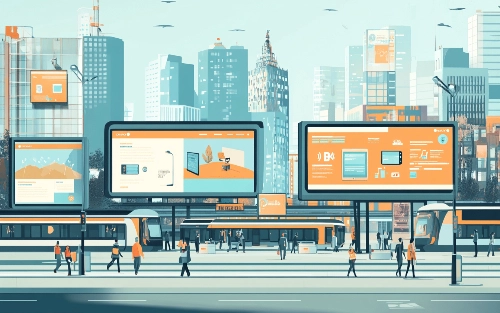
Comparing DOOH and Traditional OOH
1. Dynamic Nature
DOOH stands for Digital Out-Of-Home advertising. It offers a dynamic approach compared to traditional OOH. Traditional OOH relies on static billboards and posters. These remain unchanged until someone replaces them.
In contrast, DOOH displays can change content frequently. Advertisers can update messages in real-time. This flexibility allows for tailored advertising based on time, weather, or events. For example, a DOOH ad might promote ice cream on a hot day but switch to hot coffee when it gets cold. This adaptability enhances relevance and effectiveness.
2. Remote Management
A key advantage of the DOOH system is its remote management capabilities. Advertisers can control multiple displays from one location. This saves time and resources compared to traditional methods.
With traditional OOH, changing an ad often requires physical labor. Crews must travel to each site to replace materials. In contrast, with a DOOH platform, updates occur instantly. This efficiency allows brands to respond quickly to market changes or audience feedback.
For instance, if a product sells out, advertisers can remove that ad immediately. They can replace it with another promotion without any delay. This level of control enhances campaign effectiveness.
3. Audience Engagement
The impact of digital displays on audience engagement is significant. Research shows that DOOH advertising captures attention more effectively than traditional methods. Bright colors and moving images draw eyes in ways static ads cannot.
Studies indicate that viewers spend more time looking at digital displays. Engaging visuals lead to higher recall rates for advertised products. Brands benefit from this increased interaction.
Traditional OOH lacks the interactivity found in DOOH platforms. Static ads offer no way for viewers to engage directly with the content. In contrast, some DOOH deployments allow for interactive elements like QR codes or touch screens. These features invite consumers to participate actively.
Moreover, the ability to display different ads throughout the day means reaching diverse audiences at various times. For example, an ad targeting commuters in the morning can shift to family-oriented promotions in the evening.

Advantages of LED Displays in Advertising
1. High Visibility
LED displays stand out due to their high visibility and brightness. They can be seen from long distances, even in bright sunlight. This makes them ideal for outdoor advertising. Advertisers benefit from this feature as it captures the attention of passersby effectively. Bright colors and dynamic content make digital ads more appealing.
Many businesses use commercial LED displays to promote their products. These displays are often placed in high-traffic areas. The result is increased foot traffic and higher engagement rates.
LED display technology offers a range of formats. This versatility allows advertisers to cater to different needs and locations. From large billboards to smaller window displays, there’s a suitable option for every scenario. Electronic information displays can be customized for specific events or promotions.
Digital signage can change messages quickly. This adaptability is vital for advertising campaigns that need frequent updates. For instance, restaurants can showcase daily specials in real-time. Retail stores can highlight flash sales on short notice.
3. Cost-Effectiveness
Cost-effectiveness is another significant advantage of LED displays. While the initial investment may seem high, the long-term benefits outweigh the costs. LED display technology consumes less energy compared to traditional options. This translates into lower electricity bills over time.
Maintenance costs are also reduced with digital display solutions. Unlike printed materials, electronic screens do not require regular replacements. With fewer physical components, there’s less chance of breakdowns or repairs needed.
LED displays serve as a valuable advertising platform for various industries. Businesses can reach wider audiences with targeted messaging. Digital display technology allows for precise demographic targeting based on location and timing.
Advertising professionals appreciate the ability to track performance metrics easily. They can analyze viewer engagement through data analytics tools. This insight helps refine future advertising strategies.
5. Enhanced Engagement
Engaging customers is crucial in today's competitive market. LED displays enhance customer interaction through animated graphics and videos. People are more likely to remember advertisements that capture their attention.
Outdoor advertising has evolved significantly with these advancements. Dynamic content keeps the audience interested longer than static images ever could. As a result, advertisers see improved conversion rates and brand recognition.
Dynamic Messaging and Viewer Engagement
1. Real-Time Data
Utilizing real-time data allows advertisers to tailor messages for specific audiences. This method adjusts content based on time of day, weather, or local events. For example, a coffee shop can display ads for hot drinks in the morning and iced beverages in the afternoon.
Advertising campaigns become more effective when they resonate with viewers' current needs. Digital advertising methods that leverage real-time data enhance relevance. This approach increases traffic as it attracts potential customers at the right moment.
2. Interactive Content
Creating interactive content boosts viewer participation. Engaging formats like polls or quizzes encourage feedback. When viewers interact, they feel a connection to the brand.
For instance, a clothing store might ask shoppers to vote on new styles via a digital display. This not only engages customers but also provides valuable insights into preferences. Such campaigns foster loyalty by making consumers feel involved in decision-making.
3. Eye-Catching Visuals
Leveraging eye-catching visuals is crucial in digital advertising. Bright colors and dynamic animations capture attention quickly. Research shows that people remember visuals better than text alone.
Video displays are particularly effective. They can showcase products in action, demonstrating features and benefits clearly. A car dealership can use video ads to highlight safety features or performance capabilities. These engaging elements significantly enhance message retention among viewers.
4. Flexibility in Campaigns
Flexibility is another advantage of digital displays. Advertisers can change messages instantly without needing physical alterations. This adaptability allows for timely promotions or seasonal campaigns.
For example, during holiday seasons, businesses can update their ads to reflect festive themes easily. This quick turnaround keeps content fresh and relevant, attracting repeat viewers.
5. Benefits of Dynamic Ads
Dynamic ads offer several benefits over traditional methods. They can target specific demographics based on location or interests. This precision increases the likelihood of conversion.
These ads can run 24/7, maximizing exposure without extra costs. Businesses reach more people with less effort compared to static displays.
Applications of DOOH LED Displays
1. Retail Sector
DOOH LED displays are common in retail. Stores use them to attract customers with vibrant visuals. Promotions and discounts appear on these screens. They catch the eye and draw people inside. For example, a clothing store might display a sale announcement. This method effectively increases foot traffic.
Brands can showcase new products through dynamic content. Customers get instant information about what’s available. This approach helps retailers stay competitive. According to research, over 60% of shoppers notice digital signage in stores.
2. Transportation Hubs
Airports and train stations utilize DOOH advertising displays extensively. These locations see high volumes of travelers daily. Digital screens provide real-time updates on flights and schedules. They also promote nearby businesses and services.
For instance, an airport may display ads for local hotels or restaurants. Travelers often look for food options or lodging after arriving. Engaging content on these screens can influence their choices. Studies show that 70% of travelers make decisions based on digital ads they see at transportation hubs.
Event organizers leverage DOOH displays for promotion. Concerts, festivals, and conferences benefit from this technology. Advertisements appear in high-traffic areas leading up to the event date.
Promotional campaigns can run across multiple locations simultaneously. This strategy creates buzz and anticipation among potential attendees. A music festival might utilize various screens to highlight line-ups and ticket sales.
4. Public Spaces
DOOH LED displays find a place in public spaces too. Cities install them in parks, squares, and downtown areas. These displays serve as information hubs for residents and visitors alike.
Local governments use these screens to share community news or safety alerts. They can also promote cultural events or public services. For example, a city might announce upcoming festivals or parades through these displays.
5. Entertainment Venues
The entertainment industry uses DOOH advertising displays effectively. Movie theaters and sports arenas showcase trailers and event details on large screens. This strategy enhances the viewer experience before shows begin.
Fans see upcoming movie releases or game highlights while waiting in line. This keeps them engaged and excited about what’s next. Research indicates that nearly 80% of viewers recall seeing ads at entertainment venues.
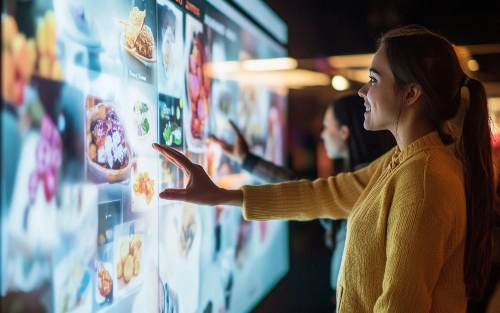
Enhancing Customer Experience with Interactive Content
1. Interactive Campaigns
Brands can design interactive campaigns that allow consumers to engage directly with content. These campaigns often use touch screens or mobile integration. For example, a clothing store might set up a display where customers can browse outfits by touching the screen. This interaction makes shopping more enjoyable and informative.
Interactive displays encourage customers to explore products in-depth. They can view videos, read reviews, and even see how items fit together. This level of engagement increases the likelihood of a purchase. Customers feel empowered when they can control their shopping experience.
2. Gamification Elements
Incorporating gamification elements into advertisements makes them more appealing. Brands can create games or challenges that reward participants with discounts or prizes. For instance, a fast-food chain might offer a digital scratch-off game on its display. Players could win free meals or coupons, which draws in more customers.
Gamified experiences leave lasting impressions on consumers. They remember the fun they had while interacting with the brand. This memory encourages return visits and builds brand loyalty over time.
3. Two-Way Communication
Interactive displays foster a two-way communication channel between brands and consumers. Traditional signage often delivers information but lacks feedback options. Consumers want to share their opinions and experiences directly with brands.
For example, a restaurant might use an interactive display for customer reviews. Diners can rate their meals and leave comments right on the screen. This feedback helps businesses improve their services and shows customers that their voices matter.
Using screens for two-way communication creates a sense of community. It allows brands to connect with their audience on a personal level. This connection enhances customer satisfaction and builds trust.
4. Strategic Advertising Solutions
Implementing strategic advertising solutions through interactive displays is key for effective marketing. Brands must analyze consumer behavior to tailor content accordingly. Data from previous campaigns can guide future strategies.
Storefront signage should reflect current trends and consumer interests. Eye-catching visuals attract foot traffic, especially in busy areas. By using dynamic content, brands can change messages quickly based on time of day or special events.
5. Impactful Advertisements
Creating impactful advertisements requires understanding target audiences. Brands must know what resonates with potential customers. Engaging content captures attention and drives action.
Digital signage innovation enables brands to showcase products in real-time. High-quality visuals combined with interactive features enhance the overall message. Customers are more likely to remember and respond to advertisements that engage them actively.
Real-Time Content Updates
Implementing systems for real-time content updates is critical. This technology allows advertisers to change their messaging instantly. Brands can respond to current events or trends without delay. For example, if a major sporting event occurs, brands can display relevant ads immediately. This agility creates a connection with the audience and keeps the content fresh.
Utilizing analytics plays a significant role in optimizing advertising efforts. By assessing performance data, brands can adjust their messaging dynamically. This process helps identify what works best in real time. For instance, if an ad underperforms, changes can be made on the spot. Adjustments might include altering visuals or tweaking the message to better resonate with viewers.
3. Swift Responses
Brands benefit from the ability to respond swiftly to market changes or consumer feedback. Real-time updates allow companies to adjust their strategies based on immediate insights. If consumers express interest in a new product, brands can quickly promote it through digital displays. This responsiveness enhances customer engagement and builds brand loyalty.
4. Ubiquitous Feature
The ubiquitous feature of real-time updates makes them essential in today’s fast-paced market. Advertisers can reach audiences across multiple platforms simultaneously. Whether at home or on the go, consumers see timely messages that reflect their interests. This constant presence keeps brands top-of-mind for potential customers.
5. Examples in Action
Several companies have successfully implemented real-time content updates. For instance, fast-food chains often change their menu displays based on local events or promotions. They might showcase special deals during sports games or holidays. Similarly, retail stores adjust their advertisements based on inventory levels or seasonal trends.
Fast-food chains changing menus during events.
Retail stores highlighting seasonal promotions.
Tech companies promoting new product launches instantly.
6. Benefits of Real-Time Updates
Real-time content updates offer numerous benefits for brands:
- Increased engagement with audiences.
- Improved relevance of advertisements.
- Enhanced ability to track consumer behavior.
- Better alignment with current trends.
These advantages lead to more effective marketing strategies and higher conversion rates.
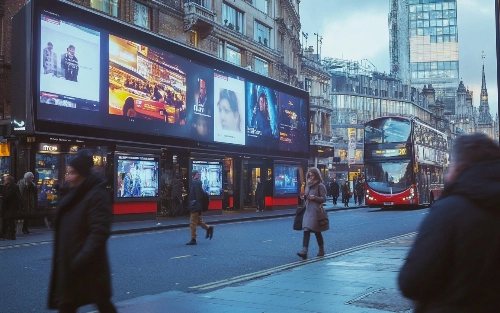
DOOH LED displays are revolutionizing advertising. They offer dynamic messaging, real-time updates, and interactive content that engage viewers like never before. You can enhance customer experiences and drive results by leveraging these technologies.
Don’t miss out on the benefits of DOOH advertising. Embrace this powerful tool to elevate your brand visibility and connect with your audience effectively. Explore how you can integrate DOOH LED displays into your marketing strategy today!
Frequently Asked Questions
1. What is DOOH advertising?
DOOH stands for Digital Out Of Home advertising. It utilizes digital displays in public spaces to deliver dynamic content, enhancing audience engagement and targeting.
2. How does DOOH differ from traditional OOH?
Unlike traditional Out Of Home (OOH) advertising, DOOH allows for real-time updates and dynamic messaging, making it more interactive and effective in reaching targeted audiences.
3. Why are LED displays used in DOOH?
LED displays are favored in DOOH due to their high visibility, vibrant colors, and ability to showcase dynamic content that captures attention more effectively than static ads.
4. What are the benefits of using DOOH LED displays?
DOOH LED displays offer increased engagement, real-time content updates, and the ability to reach a broader audience. They enhance brand visibility and drive customer interactions.
5. How can DOOH enhance customer experience?
DOOH enhances customer experience by delivering relevant, engaging content tailored to the audience's preferences. Interactive features invite participation, creating memorable experiences.
6. What types of content can be displayed on DOOH screens?
Content options include advertisements, news updates, social media feeds, weather reports, and interactive games. This variety keeps the audience engaged and informed.
7. Can businesses update their DOOH content in real-time?
Yes! One of the key advantages of DOOH is the ability to update content in real-time. This feature allows businesses to respond quickly to market changes or events.






